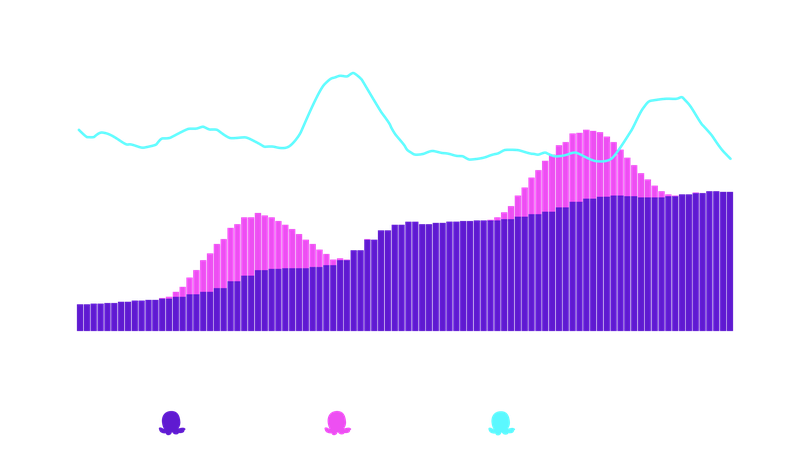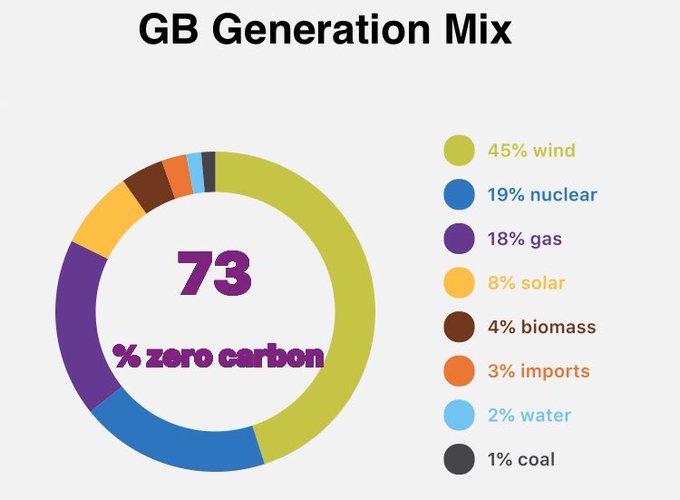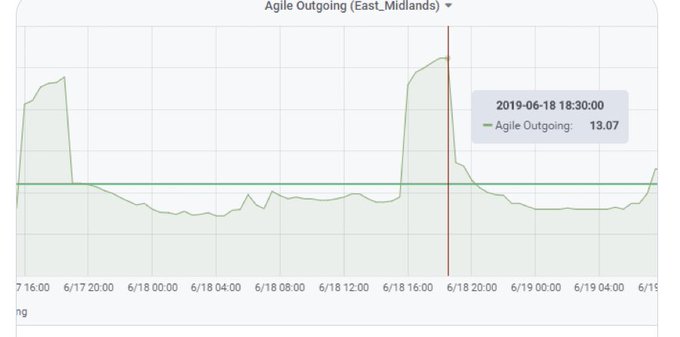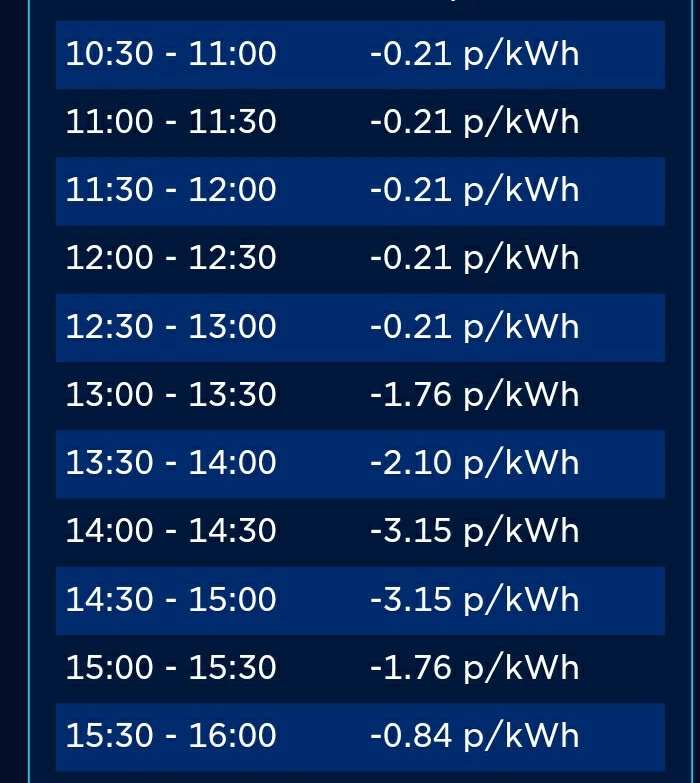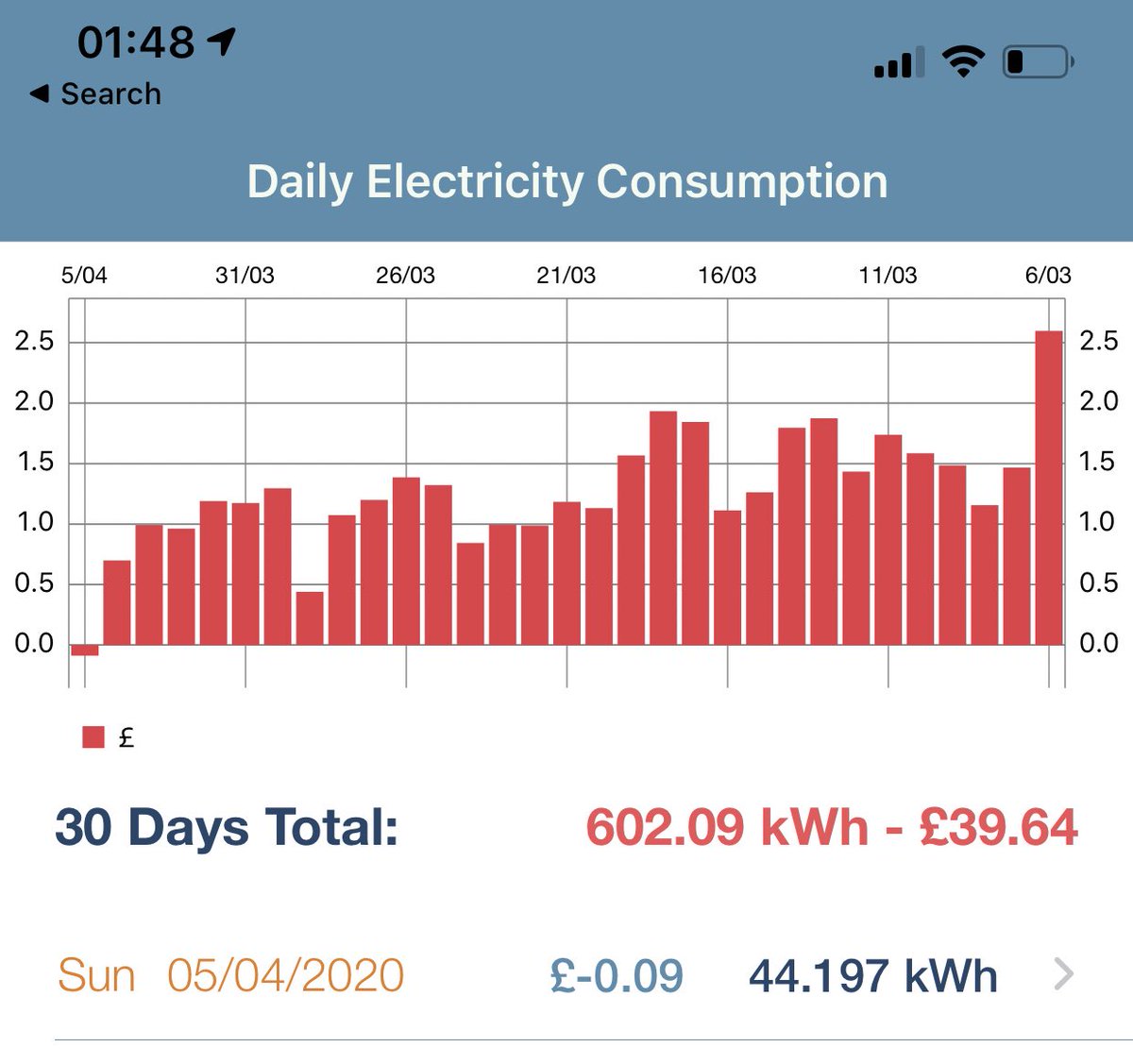On Sunday 5th April, thousands of customers on our AgileOctopus tariff got paid to use power between 10.30 and 4pm. Agile is a smart tariff, designed to pass on the highly changeable market price of electricity to customers as a way to reward them for using power when there’s lots of renewable energy on the UK grid, and less demand for it. Sometimes, prices even go negative, and customers are paid for the power they use.
Sunny, windy weekend weather combined with the overall lower energy demand thanks to Coronavirus meant Sunday was the ‘perfect storm’ for our first ever day-time price plunge. It was even covered in The Guardian.
First, how do Agile price plunges happen?
The wholesale value of energy changes every half an hour, based on factors like energy demand (i.e., how much power homes and businesses will use in total at that time) and what types of fuel are available. Energy demand is particularly important in pricing because the energy grid always has to be balanced. For every lightbulb and kettle that gets switched on around the country, there has to be an exact match for that power being pumped into the networks. When demand is lower than usual, the grid can end up with too much power and risk becoming unbalanced, which could in some cases lead to blackouts. To avoid situations like that, when demand is low, the grid needs to discourage generators from producing energy, and wants to encourage suppliers to take more energy – and this happens by the value of energy going up and down. When there is too much power in the system the grid can sometimes even pay for suppliers to use more or generators to produce less – and that’s when prices can go negative. While most conventional energy tariffs smooth out these price fluctuations for consumers, AgileOctopus passes them on – so customers can get the benefits of free or cheap energy, and are empowered to decide for themselves if they want to use less when power is in high demand, or to use more when there is a surplus. All past Agile ‘price plunges’ we’ve had have been in the early hours of the morning, when few people are using energy (so demand is really low) and there’s lots of wind blowing. This time, for the first time ever, we had a nearly six hour price plunge throughout the day!
So, why was there a daytime price plunge on Sunday?
Have a look at the graph below for a good visualisation of what happened…
Forecasted wind and solar generation vs total UK energy demand, April 4th-5th 2020

The Coronavirus outbreak has caused a big overall decrease in the UK’s total energy demand.
While household energy use is going up, business energy use is going way down. It’s true that many of us are at home using more energy than we might’ve before, though it’s a lot less than you might think as we’re starting to come into warmer weather so high heating bills are coming down. Our data scientists have used smart meter readings from 60,000+ homes to work out that the average isolating household was using around 4% more energy in the very first week of social isolation (read their full findings here). But the outbreak has also meant lots of big industrial buildings with far higher energy demand – from large offices and factories to pubs and shopping centres – have had to shut their doors. This big drop in business energy consumption far outweighs the small increase in domestic energy consumption. Overall, the UK’s energy demand is down somewhere between 9-13%. Then, on Sunday morning, the especially sunny and windy weather brought a surge in renewable generation. This, coupled with the UK’s lower energy demand, meant that renewables provided a record-breaking share of the UK’s energy needs on Sunday – 40% from wind and almost 20% from solar.
This combination of factors meant market energy prices went negative, and so Agile prices plunged:
Our grid is so clean today that we will being paid to use electric
on @octopus_energy #Agile Free fuel for the #Ev on our driveway
First time I’ve seen negative prices during the day from @octopus_energy.
Going to be making bread, doing washing and cycling battery to take advantage!
Things I’m doing during @octopus_energy Agile plunging price period..
Charging the car
Dishwasher on
Washing on
Dryer on
Oven clean function on
Hot water on for showers we delayed this morning
Kids charging their power banks Am I missing anything
This weekend’s record high numbers of renewables provide a critical opportunity for this industry to experience what an energy market of the future might look like – and really showed the value of dynamically-priced tariffs like Agile.
Agile’s low prices reward customers for using energy when it’s greenest, rather than at times when it’s most convenient. If customers use up as much energy as they can during times when the electrons coming down the wires are mostly green ones, there’ll be less need for them to use power during the daily energy ‘peaks’, when there’s lots more energy consumption and so more fossil fuel generators have to be called upon to meet the demand. Taking Sunday as an example – all those customers did the washing, charged their cars, cooked, and charged their appliances in the middle of the day using sun and wind power, meaning they wouldn’t have to do it at 7pm that evening when everyone else in the country is using lots of (far more polluting) energy. This is part of a huge plan to help decarbonise energy, experimenting with an energy system dictated by supply rather than demand. This shift is crucial as we move towards being powered more by ‘intermittent’ energy sources like sun and wind power. In a system dictated by supply, when our energy sources are abundant (i.e., a windy or sunny day) people would switch on and use all the energy they can – a totally different system to our current demand-based one, where people use energy whenever they want, and the grid does anything it can (including firing up coal power stations) to meet that demand. This weekend provided the energy networks an opportunity to manage this supply and demand with a far higher share of power coming from intermittent renewable sources. As more and more wind and solar farms go live around the UK, we’ll continue to see a higher percentage of our energy coming from intermittent, renewable sources. That means we’ll need to collectively adapt with solutions to make sure we can either store the energy in batteries so it can be used later, or get smart home products that automate appliances for use at the cheapest and greenest times into the mainstream. In a way, Agile customers are prototype “load shifters” for this future energy system, showing how it could work at a much larger scale.


